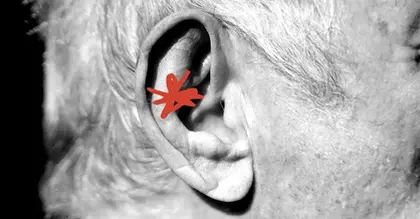
- Recently, there has been increasing awareness about autism diagnoses and their complexity.
- At the same time, the United States federal health secretary Robert F. Kennedy Jr. has made several debated claims about autism prevalence.
- He has claimed that autism cases are on the rise, and that autism has become ‘an epidemic’.
- He also claimed that environmental toxins are to blame for autism.
- A board certified family medicine physician helps Medical News Today fact-check these claims.
Posts on social media platforms have recently boosted awareness and acceptance of autism, as users report their own experiences of receiving a diagnosis for, and living with this neurodevelopmental condition.
Some of the buzz around this topic, however, has also fed discussions around an apparent rise in autism diagnoses in the United States.
U.S. Federal Health Secretary Robert F. Kennedy Jr. has recently made a series of claims regarding this apparent rise.
These claims seem to suggest that autism has become a public Health emergency in the U.S. What exactly did the federal Health secretary claim, and how do those claims stack up against existing scientific evidence?
Medical News Today set out to fact-check them with the help of one of our trusted experts, David Cutler, MD, a board-certified family medicine physician at Providence Saint John’s Health Center in Santa Monica, CA.
In a press conference from April 16, 2025, building on a new
According to the new CDC report, one out of every 36 children in the U.S. has a diagnosis of autism, up from an estimated one in 44 children in 2021.
However, “the apparent rise in autism diagnoses in the U.S. is primarily due to improved awareness, expanded diagnostic criteria, and enhanced screening practices, rather than a true increase in prevalence,” Cutler told MNT.
The family medicine physician offered a breakdown of the key factors that are most likely contributing to the observed rise in autism diagnoses.
He explained that:
“Over the past few decades, the definition of autism has broadened. Previously, the diagnosis was reserved for individuals with severe impairments. However, with the introduction of the DSM-5 [The Diagnostic and Statistical Manual of Mental Disorders, Fifth Edition] in 2013, conditions [formerly known as] Asperger’s syndrome and pervasive developmental disorder – not otherwise specified were incorporated under the umbrella-term ‘autism spectrum disorder’ (ASD).”
“This change has led to more individuals, particularly those with milder symptoms, receiving an autism diagnosis,” Cutler pointed out.
Other factors have also contributed to an increase in autism diagnoses over the years, including:
- improved screening and earlier diagnosis
- increased awareness and advocacy
- diagnostic substitution.
1. Improved screening and earlier diagnosis
“The American Academy of Pediatrics recommended routine autism screening at 18 and 24 months of age starting in 2006,” said Cutler.
According to him, “this proactive approach has resulted in earlier identification of children with autism, including those with less pronounced symptoms, thereby increasing the number of diagnoses.”
In short, autistic individuals with lower support needs who would not, historically, have been considered for an autism diagnosis, are now recognized thanks to improved screening for symptoms.
2. Increased awareness and advocacy
“Greater awareness among parents, educators, and healthcare providers has led to more children being evaluated and diagnosed,” the expert also told us.
“This is particularly evident in historically underdiagnosed groups, such as females and racial minorities, who are now more likely to be identified and receive appropriate services,” he added.
In other words, historically marginalised groups and individuals assigned female at birth, who were previously less likely to be considered for an autism diagnosis, now encounter fewer obstacles in accessing neurodevelopmental assessments.
3. Diagnostic substitution
“In the past, children with milder developmental issues might have been diagnosed with intellectual disabilities or learning disorders,” explained Cutler.
“As understanding of autism has evolved, many of these children are now being diagnosed with ASD, a phenomenon known as diagnostic substitution,” he told us.
In the press release, Kennedy suggested that autism “has to be” caused by “environmental exposure” to toxins. Doubling down on the autism epidemic claim, he also downplayed the role of genetic heritability in this neurodevelopmental condition.
How much of this is really true, though?
According to Cutler, “genetic factors play a significant role in autism,” and several large studies have shown that, in many cases, autism seems to run in families.
For example, one meta-analysis of seven twin studies — published in
More recently, a study published in The Journal of the American Academy of Child and Adolescent Psychiatry in September 2019 found that, in families where there is already one autistic child, another sibling is also likely to be autistic.
Nevertheless, Cutler did not dismiss the notion that environmental factors also play a role, pointing out that some “studies suggest that environmental influences during pregnancy and early childhood may also contribute to the risk.”
“
In brief, while autism diagnoses may be on the rise, the reasons for this are most likely to be found in improvements to official diagnostic criteria, heightened awareness of the complex presentation of autism among medical professionals, and better advocacy and self-advocacy among populations that have traditionally had poorer access to Healthcare.
And while some environmental factors may play a role in autism, as they do in most aspects of health and development, there is no evidence right now that they are the main drivers when it comes to neurodiversity.
“The increase in autism diagnoses reflects advancements in understanding, diagnosing, and recognizing autism across diverse populations. While environmental and genetic factors are under investigation, the primary drivers of the apparent rise are changes in diagnostic criteria, enhanced screening, and heightened awareness.”
— David Cutler, MD





